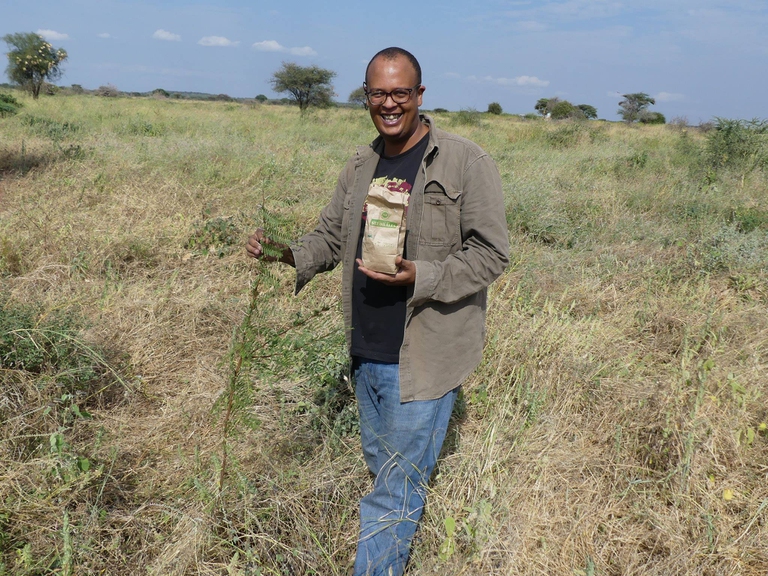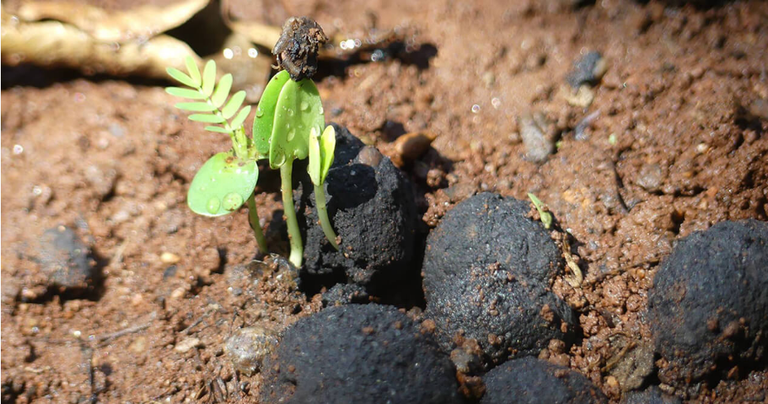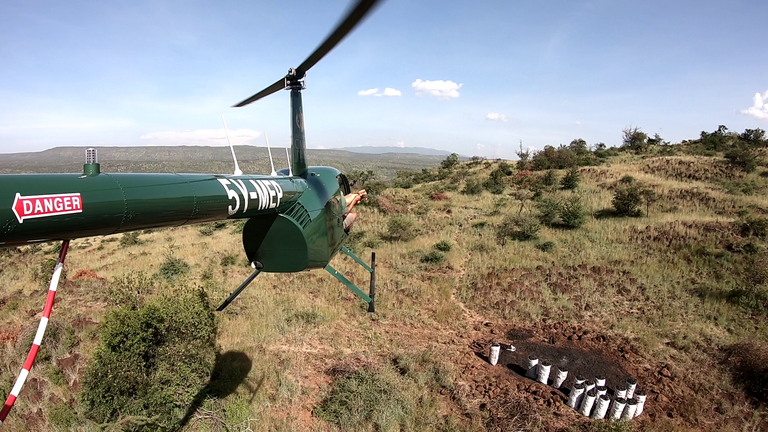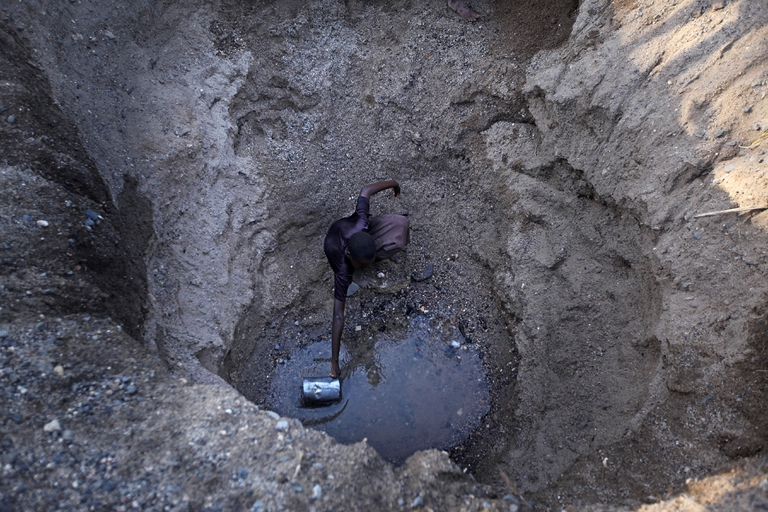
South African court dismisses a major lawsuit by 140,000 Zambian women and children against Anglo American for Kabwe lead poisoning. A setback for affected communities enduring the lasting impact of lead contamination.
A Kenyan company has developed a new technology, seed balls, to stop the devastation wrought by climate change and soil erosion on indigenous communities.
For decades, the Kenyan government has struggled to halt the deforestation crisis. According to the Green Africa Foundation, the country is estimated to be cutting down 5.6 million trees and shrubs annually. But recently there has also been some good news, with both government and non-government-led initiatives showing signs of progress. Several startups have started looking for solutions to the country’s climate change, deforestation and land degradation burden. Among these is Seedballs Kenya, a company that has pioneered a method for mass-producing seed balls, which would facilitate the low-cost and efficient reintroduction of trees and grass species into degraded areas across Africa.
In the mid-1980s, Dr Maxwell Kinyanjui – who has since sadly passed away – developed the Kenya Ceramic Jiko, an oven that uses 50 per cent less charcoal to produce the same amount of heat as traditional charcoal ovens. Dr Kinyanjui believed that this innovation would reduce the need for charcoal and help halt deforestation. Unfortunately, households continued to cut down more trees and use the same amount of charcoal, shifting their savings to heating water and their homes.
Then, in the late 1990s, Dr Kinyanjui and Martin Dunford decided to start investigating the possibility of growing trees in dryland areas by coating seeds with a protective charcoal layer. In 2016, based on their experiments, Seedballs Kenya was founded, as a collaboration with Cookswell Jikos and Chardust Ltd. “Our mission was simple, we wanted to find a way to lower the cost of growing more of the indigenous Kenyan trees that are overexploited for charcoal production and palatable grasses that are overgrazed primarily in the dryland parts of Kenya,” co-founder of Seedballs Kenya Teddy Kinyanjui said in an interview.
Mr Kinyanjui said seed balls are inexpensive and can be easily dispersed over large areas, which are often hard to reach. The indigenous seeds have been certified by the Kenya Forestry Research Institute (KEFRI). “We have a rigorous QC program to do random checks on every batch of seed balls and they are made to hit target numbers of seeds per cycle. We also keep a batch and provenance tracking system for all our KEFRI certified seeds as well. Our seeds are not treated or altered in any way. Simply put, we are giving Mother Nature a helping hand by protecting the seeds from predators and sun until the appropriate natural environmental conditions trigger germination,” Kinyanjui continued.
“There are quite a few variables and it really depends on species type, planting locations, rainfall, soil types, livestock/wildlife pressure etc. But so far we have seen roughly 5-10% for ‘wild’ acacia seed balls in places like Mitito/Narok and Amboseli areas and up to 60-70% for on-farm types like the sesbania and dombeya. Then, of course, the grass seed balls are very different – they have about 80-90% germination and growth on average if the rains and soil are good,” Kinyanjui explained.
Furthermore, Seedballs Kenya has adopted a guerilla gardening tree-planting style. For instance, school children use slingshots to plant trees in their communities. Furthermore, the company has persuaded local helicopter charter firms to keep bags of seed balls under the seats; passengers can help reforest Kenya by throwing the balls out of windows while they fly.
According to Seedballs Kenya, about 13 million seed balls have been thrown into the ground across Kenya, Ivory Coast, and Zambia. More than half the distributed seed balls will germinate and eventually become mature trees. As the trees grow, their roots will help to anchor the earth and stop further soil erosion. “Our entire supply and distribution chain is not only piggybacked onto existing logistics, but our machines only use electricity, which in Kenya is 80% sourced from renewables,” Kinyanjui stressed.
Mr Kinyangui is also optimistic about the future. “One of the key lessons we have learnt so far is the importance of site matching the right types of trees or grasses species to the right places. Local community ownership and involvement are also 100 per cent key. Finally, making tree-planting more fun is a huge win for engaging young people in greening Kenya! We plan to continue growing like a tree, one branch at a time,” he concluded.
Mau Forest Complex, Mt. Kenya, Aberdares, Cherangany Hills, and Mt. Elgon, known as Kenya’s “water towers”, are forests that provide an estimated 75 per cent of the country’s water resources. They are central to Kenya’s economic and social well-being. However, they have started to lose their ability to store water during the rainy season and release it slowly during dry periods.
Experts say that Kenya’s water-tower ecosystems have been seriously degraded and continue to be impacted by irregular and ill-planned settlements, overgrazing, uncontrolled and illegal forest resource extraction, and the conversion of forest land to agriculture.
In 2019, Kenya embarked on an ambitious initiative to stop any further decline of its forest cover and restore it to about 10%, a target expected to be met by 2022. Furthermore, the government has created a legal framework to help achieve this goal. Additionally, it has committed to restoring 5.1 million hectares of degraded and deforested landscapes by 2030. This will be its contribution to the African Forest and Landscape Restoration Initiative (AFR100), a pan-African, country-led effort to restore 100 million hectares of deforested and degraded landscapes.
However, we must act in order to protect and maintain healthy forests, avoid dangerous climate change, and ensure that the world’s forests continue to provide critical services for the well-being of the planet and its people.
Siamo anche su WhatsApp. Segui il canale ufficiale LifeGate per restare aggiornata, aggiornato sulle ultime notizie e sulle nostre attività.
![]()
Quest'opera è distribuita con Licenza Creative Commons Attribuzione - Non commerciale - Non opere derivate 4.0 Internazionale.
South African court dismisses a major lawsuit by 140,000 Zambian women and children against Anglo American for Kabwe lead poisoning. A setback for affected communities enduring the lasting impact of lead contamination.
Controversial African land deals by Blue Carbon face skepticism regarding their environmental impact and doubts about the company’s track record, raising concerns about potential divergence from authentic environmental initiatives.
Majuli, the world’s largest river island in Assam State of India is quickly disappearing into the Brahmaputra river due to soil erosion.
Food imported into the EU aren’t subject to the same production standards as European food. The introduction of mirror clauses would ensure reciprocity while also encouraging the agroecological transition.
Sikkim is a hilly State in north-east India. Surrounded by villages that attracts outsiders thanks to its soothing calmness and natural beauty.
Sikkim, one of the smallest states in India has made it mandatory for new mothers to plant saplings and protect them like their children to save environment
Chilekwa Mumba is a Zambian is an environmental activist and community organizer. He is known for having organized a successful lawsuit against UK-based mining companies.
What led to the Fukushima water release, and what are the impacts of one of the most controversial decisions of the post-nuclear disaster clean-up effort?
Nzambi Matee is a Kenyan engineer who produces sustainable low-cost construction materials made of recycled plastic waste with the aim of addressing plastic pollution and affordable housing.











